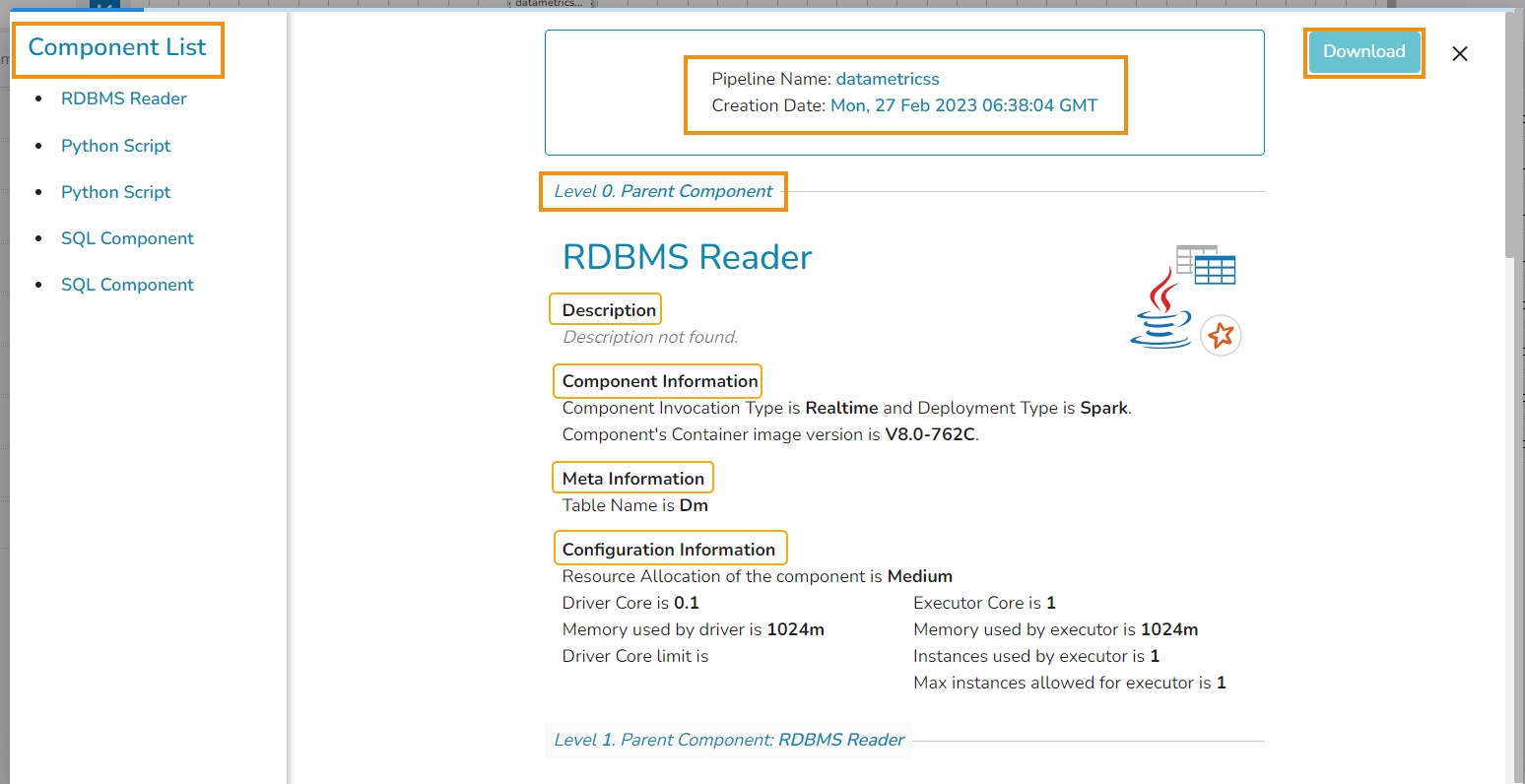Pipeline Overview
This page provides an overview of all the components used in the pipeline in a single place.
The Pipeline Overview icon helps to display all the components used for the selected pipeline on the same page.
Check out the given demonstration to understand the Pipeline Overview page.
The user can access the Pipeline Overview page by clicking the Pipeline Overview icon.
1. Component List
The Component List will list all the components used in the pipeline.
2. Pipeline Details
Pipeline Name: Name of the pipeline.
Creation Date: Pipeline creation date.
3. Download and Cross(X) Options
Download: Allows us to download Pipeline Overview details.
Cross: Option to close the pipeline overview.
4. Level-wise component details
A detailed description of components used in the pipeline. Level 0, Level 1, and so on.
Below are the available details:
Component Name
Description
Component Information: Information such as "Invocation Type", "Deployment Type" and "Container Image Version"
Meta Information: Information such as running script, queries, and table name.
Configuration Information: Information such as Resource Allocation, core, and memory usage.

Was this helpful?